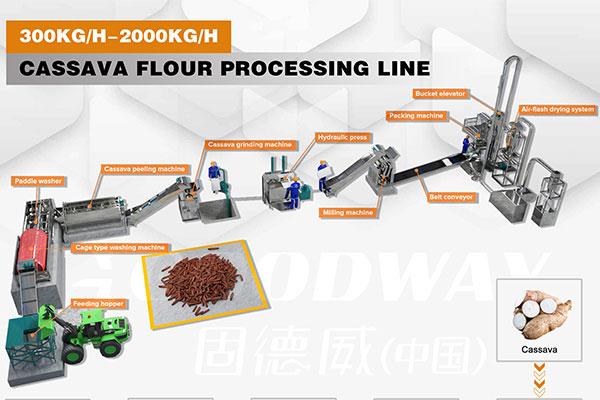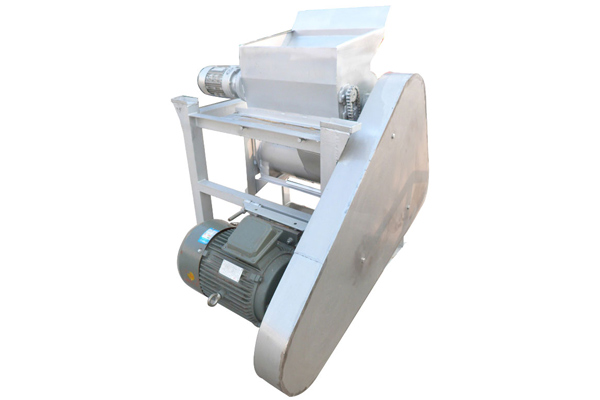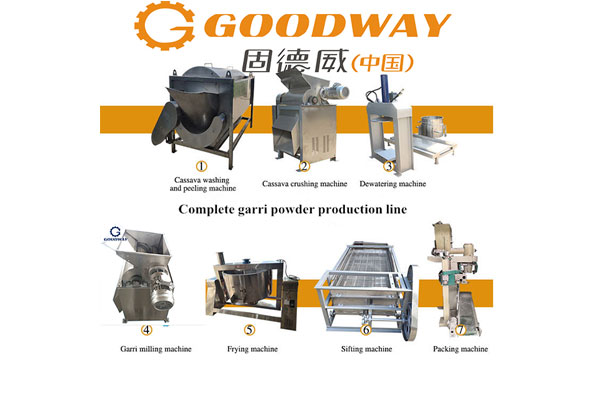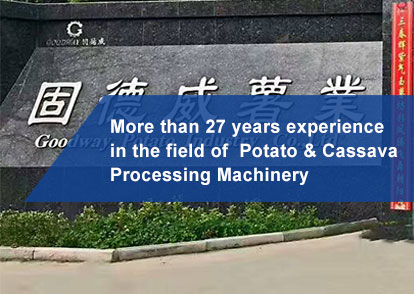Starch production process mainly includes the following six steps:
Step one of Starch Production Process: Basic Principle of Cleaning
Cleaning function: mainly to remove the sediment from the outer epidermis of sweet potatoes and wash out the skin of sweet potato tubers. Clean fresh sweet potatoes or dried sweet potato chips as the raw materials for starch production, which is the basis to ensure the quality of starch. The cleaner the cleaning, the better the quality of starch.
Crushing function: Sweet potato starch is mainly stored in the fleshy part of root tubers, and only a small amount is stored in the endothelium. The purpose of crushing is to destroy the tissue structure of sweet potato, so that small starch granules can be successfully disintegrated from root tubers. Starch released from cells is called free starch, and the starch kept in the cells inside the dregs is called binding starch.
Crushing is one of the most important processes in the processing of fresh potatoes, which relates to the yield of fresh potatoes and the quality of starch.
The requirements of crushing are as follows:
1. To break up fresh potato cells as much as possible and release more free starch granules.
2. Easy to separate. It is not desirable that the skin residue is too fine, which is not conducive to the separation of starch from other components, but also increases the difficulty of separating the fine residue.
Step three of Starch Production Process: Basic Principle of Screening
Sweet potato dregs are slender fibers, larger than starch granules in volume, bigger than starch granules in swelling coefficient and lighter than starch granules in specific gravity. The crushed raw pulp is further filtered out with water as medium.
Step four of Starch Production Process: Basic Principles of Purification and Precipitation
The proportion of mud and sand is larger than that of water and also larger than the starch granules. According to the principle of gravity separation, the use of cyclone sand removal or flume sedimentation method can achieve better results. The proportion of yellow pulp is close to water and lighter than that of starch granules. The shape of yellow pulp is palm shape. The longer the processing period, the bigger the glue performance. It is very difficult to separate the starch granules if it sticks to the sieve. Therefore, fresh raw materials, short technological process and timely separation are required.
Step five of Starch Production Process: Basic Principle of Dehydration
The concentrated starch pulp still contains more water, and further dehydration can be carried out before drying.
Step six of Starch Production Process: Basic Principle of Drying
At present, starch airflow drying (also called sudden drying) is generally used in starch factories. The whole process time is completed in a moment, so the moisture content in starch granules is too late to gelatinize and has been dried, so there will be no gelatinization or degradation.
Air drying is a process of co-flow drying, that is, the process of co-flow of wet powder and hot air, which consists of two processes of heat and mass transfer. When wet starch contacts with hot air, hot air transfers heat energy to the surface of wet starch and then transmits the surface to the interior, which is a heat transfer process. At the same time, moisture in wet starch diffuses from the interior of material to the surface of starch in liquid or gaseous state, and from the surface of starch to the hot air through gas film, which is a mass transfer process. It is to exchange heat equally between high temperature airflow and wet starch in the drying tube, so that the dried starch is powdered and can be packed into storage after cooling.

 EN
EN
 fr
fr  es
es  it
it  pt
pt 







